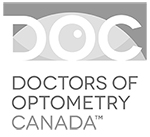Dry eye syndrome is a common condition that affects millions of people worldwide, impacting their eye comfort and vision clarity. While occasional dryness may be temporary and manageable, chronic or severe cases of dry eye can significantly interfere with daily activities and overall eye health. Understanding the causes, recognizing the symptoms, and exploring treatment options are essential in managing this condition effectively.
Causes of Dry Eye:
Dry eye occurs when the eye doesn’t produce enough tears or when the tears evaporate too quickly. Some common causes include:
- Aging: As people grow older, tear production typically decreases, leading to dryness.
- Environmental factors: Exposure to windy, smoky, or dry environments can contribute to dry eye symptoms.
- Screen time: Extensive use of digital screens can reduce blink rates, leading to increased tear evaporation and dryness.
- Medical conditions: Conditions like arthritis, diabetes, and thyroid disorders can contribute to dry eye symptoms.
- Medications: Certain medications, including antihistamines, decongestants, and antidepressants, can reduce tear production.
Symptoms of Dry Eye:
Recognizing the symptoms of dry eye is crucial for early intervention. Common symptoms include:
- Stinging or burning sensation: Eyes may feel irritated or as if something is in them.
- Redness: Increased bloodshot appearance in the eyes.
- Blurred vision: Vision may become temporarily blurred, affecting clarity.
- Sensitivity to light: Eyes may become more sensitive to light, causing discomfort.
- Difficulty wearing contact lenses: Discomfort or irritation when wearing contact lenses.
Treatment and Management:
Fortunately, various treatment options are available to alleviate dry eye symptoms and improve eye comfort:
- Artificial tears: Over-the-counter eye drops can provide temporary relief by lubricating the eyes.
- Prescription medications: Your optometrist may prescribe medications to reduce inflammation or increase tear production.
- Lifestyle adjustments: Taking breaks during screen time, using a humidifier, and staying hydrated can help manage symptoms.
- Nutritional supplements: Omega-3 fatty acids or dietary supplements may improve tear quality and reduce dryness.
- Advanced procedures: In severe cases, procedures like punctal plugs (to block tear ducts) or intense pulsed light therapy may be recommended.
Preventive Measures:
While some factors contributing to dry eye may be unavoidable, adopting certain habits can help prevent or minimize symptoms:
- Blink regularly: Remind yourself to blink frequently, especially during long periods of screen use.
- Take breaks: Follow the 20-20-20 rule—every 20 minutes, take a 20-second break to look at something 20 feet away.
- Stay hydrated: Drink enough water throughout the day to maintain overall hydration.
- Protect your eyes: Wear sunglasses or protective eyewear in windy or dry environments.
- Regular eye exams: Visit your optometrist regularly for check-ups and early detection of any eye conditions.
Dry eye syndrome is a common and often manageable condition, but its impact on daily life can be significant. Recognizing the causes, symptoms, and available treatments is essential for effectively managing dry eye. By adopting preventive measures and seeking guidance from an optometrist, individuals can alleviate discomfort and maintain optimal eye health.
Remember, if you’re experiencing persistent dry eye symptoms, consulting an optometrist is crucial to determine the best course of action tailored to your specific needs.


